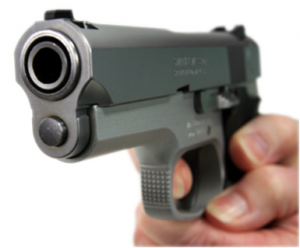Within ten days of presenting on this topic at a safety conference, I awoke to read about the senseless slaughter of thirteen at Fort Hood, a story which dominated the news for some time.
It is worth pointing out that on the day of that massacre, an apparently disgruntled ex employee walked into the building he had worked in two years earlier and opened fire, killing one and wounding five, a story that didn’t quite make it onto the front page. This happened in Orlando Florida.
Just four days later and also lost in the fog of the 24 hour news cycle, was a shooting that occurred on the premises of a business in Tualatin, Oregon leaving one dead and two wounded. This was a case of domestic violence spilling over into the workplace as a man shot his ex wife.
Perhaps most bewildering is how rapidly the sobering nature of these so called “low probability” yet “high impact” events fade from memory as we return to our busy lives, with so many of us yet again not implementing an emergency plan of action for such an occurrence!
Which barrier to “awareness and preparedness” is at play here; apathy, complacency or denial?
I have been on the receiving end of gunfire albeit not in a work environment. More terrifying than the gunshots was my distinct awareness of how unprepared I was for such an event. This lead me to freeze up like the proverbial “deer in the headlights” as I tried to comprehend what was going. Valuable seconds ticked by before I stopped thinking and actually began to react. I was lucky to get away unscathed.
It is usually how we react during the very first few seconds of a shooting incident that will dictate our chances of survival. Those who have rehearsed a plan will bypass the thinking process and react since a response framework has already been ingrained during training. Those who don’t will be in my situation. Gripped by fear and desperately trying to think their way through the fog of the moment, brain awash in adrenaline.
Here are few facts to keep in mind and some tips to consider:
According to Homeland Security most of the damage is done within the first 8-15 minutes of an active shooting. Law enforcement usually will not arrive until this time period has elapsed meaning for those first crucial minutes all you will have are each other and any action plan you have put in place, or not.
If you have several panic buttons strategically placed within your facility you will be able to sound the alarm sooner in a situation in which every second counts.
If you have practiced retreating to designated “safe rooms” such as offices with heavy locking doors, your staff will be more efficient during an actual retreat. Taking note of all “hard points” behind which to take cover is also important. (Shelter in place)
Once in a “safe room” it is critical to keep quiet, put cell phones in vibrate mode, turn off the lights and not draw any attention to your position.
Similarly if you have if you have determined that exiting the building is your best option, having walked the routes during a drill will make for a more efficient egress. Muscle memory is crucial.
Of equal importance is knowing where you will NOT retreat to. An example is the bottom of a stairwell you arrive at only to find leads to a permanently locked utility exit door?
Exits should be constructed so that they cannot be easily blocked from the outside such as with a nearby wheeled dumpster or vehicle as was the case in the shooting at the immigration center in Binghamton N.Y. in April 2009
Redundancy during a high stress situation is always preferred. This is particularly important when designating people who will call 911, even if the panic button has been pushed. If you have facilities at other locations they too need to be alerted.
It is also important to know how to react to the responding SWAT team who will be barking out orders and moving through your facility very aggressively. In the confusion of the situation an innocent employee’s finger pointing to where the threat came from could look like a gun in hand!
DHS also suggests offering your local SWAT team the option of practicing in your facility after hours. This gives them an opportunity to sharpen their skills and you a closer relationship with the very agency that would be tasked to responding were there ever an incident at your company.
Even a well thought out rudimentary plan is better than no plan at all. At this very moment it is not a gunman that is our biggest threat. It’s the three enemies of “awareness and preparedness”; apathy, complacency and denial.
Larry Kaminer
Resource: Department of Homeland Security Actives Shooter PDF

